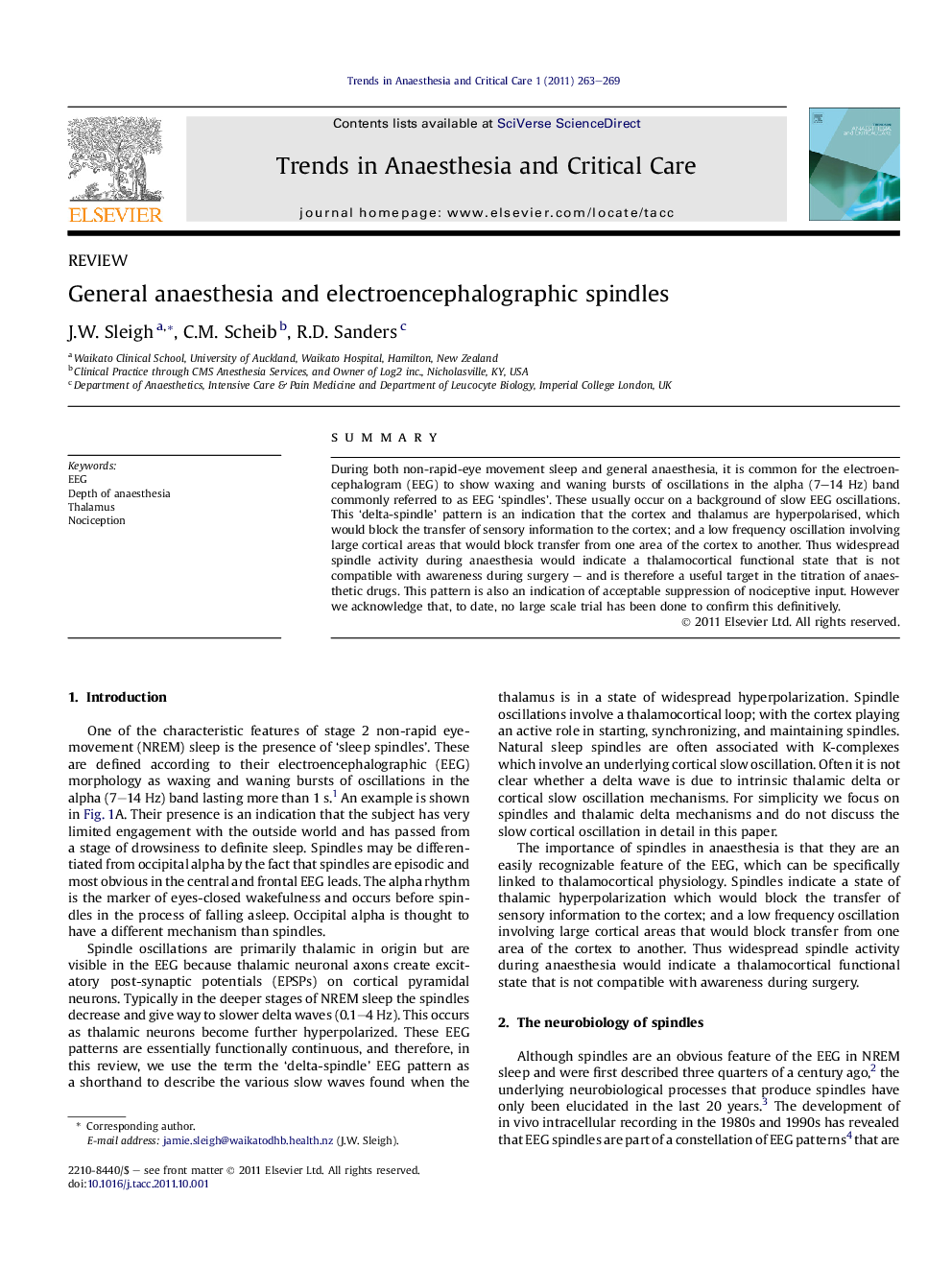| Article ID | Journal | Published Year | Pages | File Type |
|---|---|---|---|---|
| 2772830 | Trends in Anaesthesia and Critical Care | 2011 | 7 Pages |
SummaryDuring both non-rapid-eye movement sleep and general anaesthesia, it is common for the electroencephalogram (EEG) to show waxing and waning bursts of oscillations in the alpha (7–14 Hz) band commonly referred to as EEG ‘spindles’. These usually occur on a background of slow EEG oscillations. This ‘delta-spindle’ pattern is an indication that the cortex and thalamus are hyperpolarised, which would block the transfer of sensory information to the cortex; and a low frequency oscillation involving large cortical areas that would block transfer from one area of the cortex to another. Thus widespread spindle activity during anaesthesia would indicate a thalamocortical functional state that is not compatible with awareness during surgery – and is therefore a useful target in the titration of anaesthetic drugs. This pattern is also an indication of acceptable suppression of nociceptive input. However we acknowledge that, to date, no large scale trial has been done to confirm this definitively.
